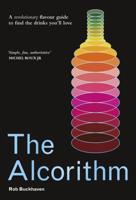Publisher's Synopsis
What do you know about diverticulitis?
Diverticular disease was rare before the 20th century. However, it is now one of the commonest health problems in the Western world. Diverticular disease is a group of conditions can affect your digestive system.
Diverticulitis is the most serious type of diverticular disease. Its symptoms are usually very uncomfortable. If left untreated, the complications may trigger chronic health problems.
The symptoms of diverticulitis range from mild to severe. Sometimes, these symptoms may have an acute onset (appearing suddenly), or they may develop gradually over several days.
The most common symptom of diverticulitis is abdominal pain. North Americans and Europeans experience the abdominal pain on the left lower side (sigmoid colon), while in Asia it is usually on the right (ascending colon).
But what causes diverticulitis really?
Well, the disease diverticulitis develops when pouches form on your digestive tract, mostly in the colon (the large intestine). These pouches are known as diverticula. They form when weak spots balloon outward in your intestinal wall.
It is important to note that inflammation and, in some cases, infection of the diverticula can cause diverticulitis. This can occur when partially digested food or feces blocks the diverticula opening.
There is no single known cause of diverticular disease. Research and clinical experience have shown that multiple environmental and genetic factors may contribute to its development. Treatment prescribed for this condition depends on the severity of your condition.
Diverticulitis can be prevented by altering the risk factors such as inactivity, smoking, and obesity. Avoiding seeds and nuts as a preventive measure is no longer recommended since there is no scientific evidence that these contribute to inflammation in diverticula.
Studies have shown that up to 35 percent of people in the Western world have diverticulosis. In rural Africa, less than one percent of the population is affected, while 4-15% of these may develop diverticulitis. The frequency of the disease increases with age, being particularly common in those over 50 years of age. At least 13,000 deaths were attributed to diverticulitis in 2003 in Europe. It is the most common anatomic disorder of the colon. In 2013, up to $2.4 billion was lost to this disease in the United States.
Diverticulitis is an important pathological condition, and patient education is the key to its prevention.
This book is a comprehensive guide on diverticulitis - It gives a detailed explanation of all you need to know about this condition including:
- What you need to know about your digestive system
- The fundamentals of diverticulitis (symptoms, complications, clinical diagnosis)
- The diverticulitis diet stages - clear fluids, low-reside diet, and high-fiber diets
- Complete shopping guide for the diverticulitis diet
- 120 proven recipes for your diverticulitis diet plan
Take total control of your digestive health with The Complete Guide to Diverticulitis









